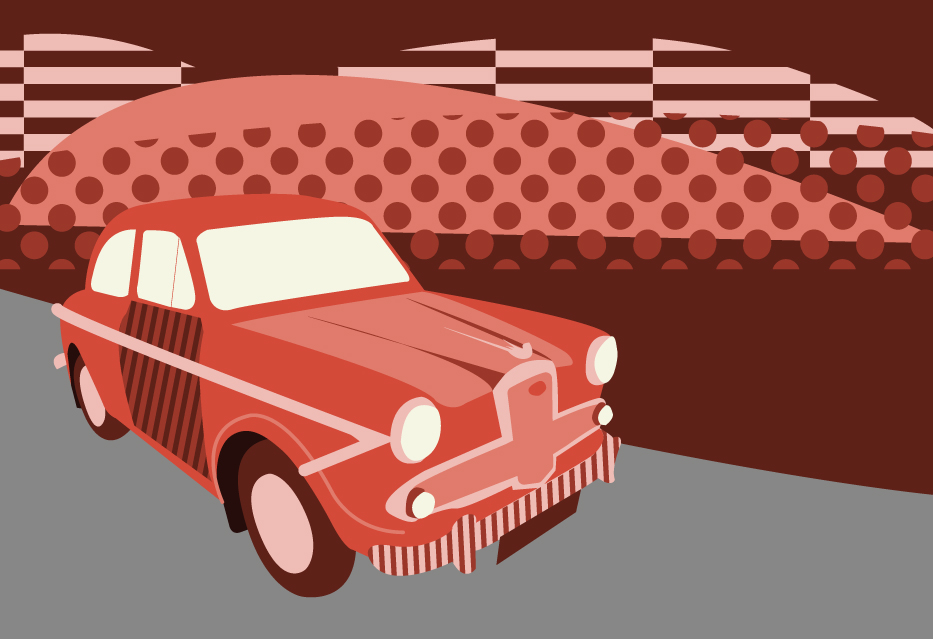Maybe it’s because it was late to the party. Maybe it’s the mark II’s love-it-or-hate-it styling. Or maybe it’s because it had as many downs as ups in the hot hatch arms race of the 1980s.
Whatever the reason, the Vauxhall Astra GTE is, these days, rarely spoken of with the same reverence as the Peugeot 205 GTi or the Escort XR3i.
It deserves better, especially the early car that gave the pace-setting Golf a run for its money, and the 156bhp GTE 16V once labelled the hot hatch king.
We look at the car that grew in stature to, albeit briefly, grab that coveted crown.
While the VW Golf GTi and Ford Escort XR3i were busy grabbing the lion’s share of the nascent hot hatch market, Vauxhall was keeping its powder dry.
But they weren’t busy doing nothing, the Astra SR a promising, if underpowered, entrant into the race in 1981 – more of a warm hatch than a hot one.
Motor magazine described it as “one of the more promising upstarts but lacking the muscle to mix it with the big boys”.
Its 1.6-litre, single-carbureted engine produced only 90bhp, well down on the Golf’s 112bhp and the Escort’s 105bhp.
In the two years up to the launch of the GTE, Vauxhall clearly hadn’t been sitting on their hands, the new car – with its jutting chin spoiler, chunky, aggressive stance and 1.8-litre engine – not only looking the part, but possessing that all-important extra horsepower.
The GTE was also notable for being – allegedly – the first production car to introduce colour-coded bumpers, wheels, skirts and extended wheel arches, but only on the polar white model.
You could also buy non colour-coded red, black and silver versions, but white was by far the most popular colour, its dazzling monochrome standing out among its black-bumpered, silver-wheeled opposition.
A cheeky advertising campaign claiming “Nought to Naughty Naughty in 8.5 secs” also appealed to the younger generation with a bit of disposable income.
Inside, the GTE retained the Recaro seats of the SR, trimmed in velour – true luxury at the time – and came with a stereo radio cassette, intermittent rear wash/wipe, and headlight washers, plus a decent-sized boot.
Testing in April 1983, Motor called the interior “an object lesson in good design”, which was “well finished and exuded the kind of build quality normally associated with the Golf”.
It wasn’t the only area where the new kid on the block competed head on with the class-leading VW – its Bosch fuel-injected 1.8-litre engine now producing 115bhp, a shade more than its German rival and considerably more than the XR3i – though the much lighter Golf was still a little sharper to 60mph.
At £6,412, it was priced roughly halfway between the more expensive VW and cheaper Escort, but could it topple the two best-sellers on the road?
Motor didn’t quite go the whole hog and say “yes”, but they were hugely impressed.
“The Astra fitted with the 1.8-litre injected engine confirms our suspicions that the SR had the potential to succeed given more muscle, and in the form of the GTE that potential has been realised,” said the road tester.
“We expected great things from the GTE in the handling department and we were not disappointed. The modified chassis proved quite capable of handling the extra power. The tremendous grip available in the dry – it is largely retained in the wet, too – coupled with well-contained body roll and very supportive seats means that the Astra can be cornered hard and fast, giving the driver a feeling of great confidence.”
The magazine praised the Astra for a “crisp, clean throttle response, matched by immaculate flexibility, the engine pulling without a stutter from idle speed in any gear”.
“It must be taken very seriously since it also has the advantages of better equipment levels and lower price while most other factors are about equal (to the Golf).
“So is the Astra now the hotrod hatchback to beat? There’s no denying that we’re mightily impressed with it, and if anything is going to topple the Golf from its position of class supremacy, this is the car most likely to do it. For the time being, though, we prefer to hedge our bets.”
Like our illustration of the Vauxhall Astra GTE at the beginning of the article?
Download a free high-quality poster version here.
A bump in the road
Not bad for a first attempt then, and in the 1983 you could be forgiven for thinking the Astra was on its way to dominate the hot hatch market with usual improvement.
No so. Not yet, anyway.
There was precious little time to develop the mark 1, with a slightly controversial new shape already on the drawing board and set to be unveiled the following year.
In some respects, the new car was a big improvement, its low shovel nose, raked profile and high tail making it the most eye-catching in an increasingly crowded hot hatch marketplace – even if not everybody liked it.
CAR magazine was sold on the Astra’s new look, however, even more so on the slippery design’s effect on aerodynamics, pointing out that most hot hatches look neither “smooth or sophisticated”.
“The XR3, with a 0.38cd, slices through the air more like an anvil than an axe,” for example.
“The sleek looking Astra, though, has changed all that. Although many will point out that its shape is redolent of 10-year-old Alfasuds and Citroen GSs, it is the most distinctive looking machine in what is a segment dominated by conservatively shaped cars. Its 0.30cd is easily the best in this class.”
But that was just about all that was best in class when the magazine measured the new GTE against the XR3i, Fiat Strada 130TC and Golf GTi.
Vauxhall carried over the 1.8-litre unit from the mark 1 – in retrospect, a mistake, and a case of tomorrow’s clothes covering today’s car.
It was clearly underpowered compared to its rivals, with the slowest 0-60 time, but its aero qualities did give it the highest top speed of 124mph, largely irrelevant unless you’re planning on storming the Autobahns.
Among CAR’s list of gripes are “flaccid” mid range pick-up, handling that “lacks finesse”, a gearchange that’s too light, and poor rear visibility.
Inside, the car featured an LCD dash display that again polarised opinion, while Vauxhall ditched the Recaro seats in favour of making their own, with some success.
They were deemed the “most genuinely impressive aspect” of the new car by the road testers, offering
“great lateral support in fast cornering and considerable support on long, motorway runs”.
Overall, though, the early mark 2 GTE left a disappointing impression.
“It had the makings of being the class star, with its adventurous styling, all-new interior and the commedable chassis/mechanicals of the the superseded GTE,” said CAR.
“The recipe could not have been better; the results show that, along the line, the Vauxhall/Opel team went badly awry.
“It’s like a thoroughbred with an immaculate pedigree and with all the right training, but which inexplicably develops weak knees on bumps and weak legs when trying to sprint. A long session at the vet is needed.”
Adrian Flux Classic Car Insurance
A step in the right direction
So far down the pecking order had the 1800cc GTE fallen that Vauxhall took the decision to take it off the market, the five-door GSi taking its place at the head of the range by the end of 1986.
But it was to be merely a hiatus, and the GTE was back the following year with a beefed up, 1998cc engine producing an improved 124bhp.
Maximum torque was up from 111lb ft to 128lb ft, but most importantly it was available at much lower revs, 2,600rpm compared to 4,800rpm, giving the car extra low-down pulling power in any gear.
Lightweight con rods and pistons reduced the engine weight, and the addition of Bosch Motronic fuel injection and ignition management system all helped to cut the 0-60mph time to 8.1 seconds.
Autocar described a “flexible jewel of an engine”, while CAR magazine saw the upgraded GTE once again as a threat to the Golf GTi.
The old car was “tame” with “no excitement for drivers”, it said, “devoid of panache or verve or brio, ingredients essential to the rapid hatch recipe”.
Always a fan of its “dramatic” looks, CAR was newly-impressed with its throttle response, a subject of criticism in the past.
“Here, the Astra reigns supreme, comprehensively ousting the Golf,” it said. “To anyone who has driven the old 1800GTE, this will come as a shock.
“Stab the throttle at 2,000rpm in fourth and you’ll get more than a deepening engine note – there’s acceleration severe enough to give your neck muscles a workout.
“And you don’t need to stab the pedal, either – just brush it, and you’ll get the kind of response you thought was the domain of engines breathing through a battery of Webers. This engine is crisp, clean and sharp.”
Its test in May 1987 pitted it against an outmuscled XR3i, an outclassed Renault 11 Turbo and a Golf GTi (of course), and only the VW could hold a candle to the Astra, emerging as still the best all-rounder.
“The Astra will appeal to those that course the country’s motorways,” it concluded. “Acceleration and cruising are its fortes, aided by that terrific new engine which at last shades the Golf’s.
“But for those who enjoy twists and turns, an engine is not enough – the GTE’s chassis does not shine as brightly.”
Motor came to a similar conclusion in June 1987, lauding the Vauxhall’s engine, economy and high-speed cruising capabilities, but unconvinced by its “slow, baulky gearchange, inert chassis and harsh ride”.
“The Astra is a vastly more convincing performer in 2-litre form than it ever was as an 1800,” said the magazine.
“It feels so muscular at low to moderate revs that you’d swear it had more than 2 litres at its disposal. For sheer driveability its engine is the best of the lot. And a top speed of 127mph sets a new standard for normally-aspirated fast hatches.
“Its combination of strengths, not least its fine economy, will appeal to drivers who spend a lot of time on the motorway.”
Arrival of the champion
It took five years to get there, with a fair few bumps in the road along the way, but by 1988 the Vauxhall Astra GTE had climbed to the top of the hot hatch rankings.
Redeveloped suspension, brakes and steering played a key role, but by far the biggest difference was what lay under the bonnet – the now legendary 16v, twin cam “red top” engine.
So named because of the red spark plug cover, the 2-litre unit boasted forged pistons, sodium-filled valves, polished ports and a four-branch exhaust manifold.
These are the sort of things you’d normally find in an engine designed for racing, so it’s no surprise to learn that it also powered the Vauxhall-Lotus single-seater of the time.
In the years that followed, it became a popular choice for modifiers and kit-car builders, its 156bhp – with more available to tuners – a perfect fit for light-weight road racers like the Westfield.
It was also more than enough oomph to carry it out of the reach of its main challengers of the time – the Golf GTi and Peugeot 309 GTi.
Testing the three cars in May 1988, a week before the new GTE went on sale, Autocar was in no doubt about the car’s new status: “There’s a new champion in the hot hatch arena. Vauxhall’s new 16-valve Astra GTE has the punch to leave the former GTi heroes floundering. For all-round hot hatch performance, the new Astra is it.”
Whereas the old Astra lagged behind in ride quality, steering and gearchange, the magazine said the new car was “a very different animal”.
On bumpy roads, the Astra’s handling still took on a slight nervousness, but stiffer springs and anti-roll bars made a marked improvement on the GTE’s handling.
But it was that hugely tractable engine that set the car apart from its rivals, its 149lb ft of torque helping to smash both the Golf and Peugeot’s in-gear acceleration before blasting on to a top speed of 131mph.
“For straight-line performance, the Astra 16v will quite simply blow the doors off of any other normally-aspirated hatchback,” said Autocar.
“Its fine, powerful engine is its heart and soul. At anything but very low revs the merest depression of the throttle brings instant and strong response. Floor it and things start to happen very quickly indeed.”
Under hard acceleration, the twin-pipe exhaust gave a healthy growl, while grip was prodigious on the more twisty roads.
At £11,776, it was also £552 cheaper than the Golf.
“For our money then, the hot hatch king is now the Astra 16V,” said the magazine. “The question now is how long it takes the other manufacturers to respond to GM’s new dominance.”
The following year, CAR magazine pitched the normally-aspirated GTE against two turbos, the MG Maestro and the Ford Escort RS.
In truth, there were very few cars on the road that could live with the Maestro’s acceleration, scorching to 60mph in a staggering 6.6 seconds.
It could leave such sporting luminaries as a Jaguar XJ-S or Lotus Excel SE in its wake, and even a 270bhp Ferrari Mondial couldn’t live with the MG to a mile a minute.
“It takes a seriously quick car, such as a Lancia Integrale or an Audi Quattro, to better the MG’s astonishing 0-60mph time,” said CAR.
So what hope for the Astra in such rapid company? Well, quite a bit as it turned out.
“Good though the turbos are, the Astra’s unblown twin-cam is even better,” said the magazine. “Although it thrives on high revs, from as low as 1000rpm the GTE not only lugs cleanly but with far greater vigour than the turbos, indicating broadly spread torque.
“There’s no sudden surge, no kickpoint, yet acceleration at its peak feels every bit as fierce as the Maestro’s, and fiercer than the Ford’s.
“Such brio, such racy crispness, such response to the throttle puts the vocal Astra engine right at the top of the league on all-round performance.”
Like our illustration of the Vauxhall Astra GTE at the beginning of the article?
Download a free high-quality poster version here.
The GTE’s roadholding was deemed “tremendous, its deportment much improved”, only the “uneasily dead” steering getting a black mark from the road tester.
“The Vauxhall is tantalisingly close to greatness,” CAR concluded. “Terrific verve and economy. Tenacious roadholding, strong brakes and cabin comfort – no class rival offers better seats or a superior driving position – and the nicely furnished Vauxhall stacks up enough points to win this confrontation.”
The GTE also enjoyed success in the British Touring Car Championship, John Cleland taking the 1989 title by a point ahead of James Weaver in a BMW M3, with Louise Aitken-Walker fifth in the overall standings in another Astra.
By 1990, the Cavalier had taken over in the BTCC, and the Astra wouldn’t return to competition until Jason Plato’s victory in 2001.
The GTE was also nearing the end on the road, a limited production of 250 cars variously known as “leather edition”, “London edition” or “Champion edition” introduced in 1990.
Leather because of the Connolly leather door cards, London because they were only sold through dealerships in the capital, and Champion because a three-colour flash on the boot and sides was the colour used by the General Motors racing teams.
The cars featured Bordeaux paintwork and came with crossed spoke alloy wheels and Recaro seats.
By 1991 and the introduction of the third generation Astra, the GTE name was no more, with the GSi the new top of the range, and subsequent “hot” versions badged VXR.


















